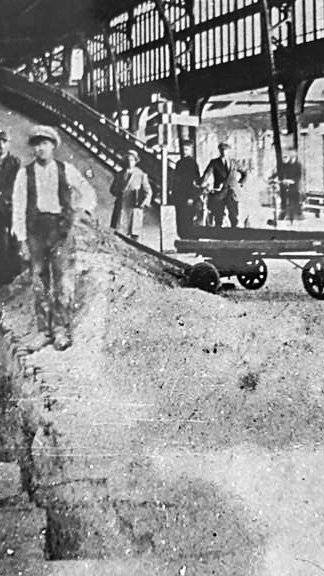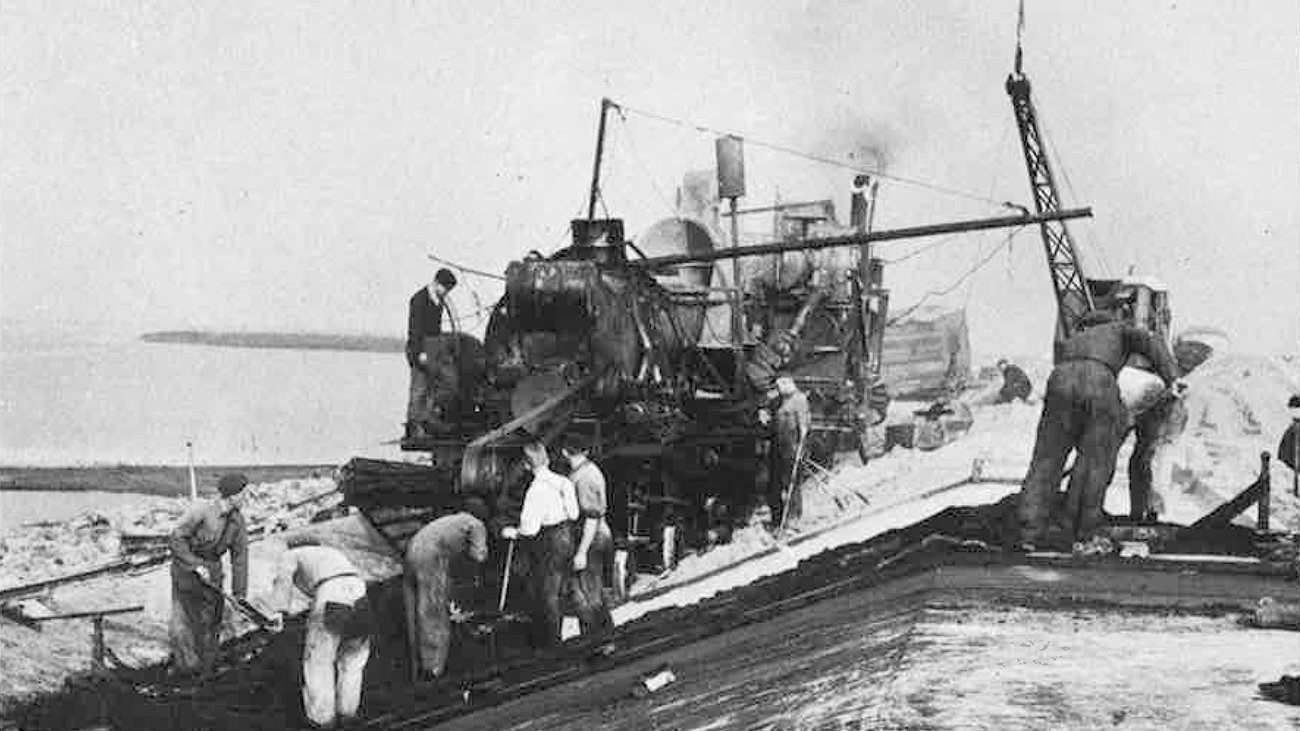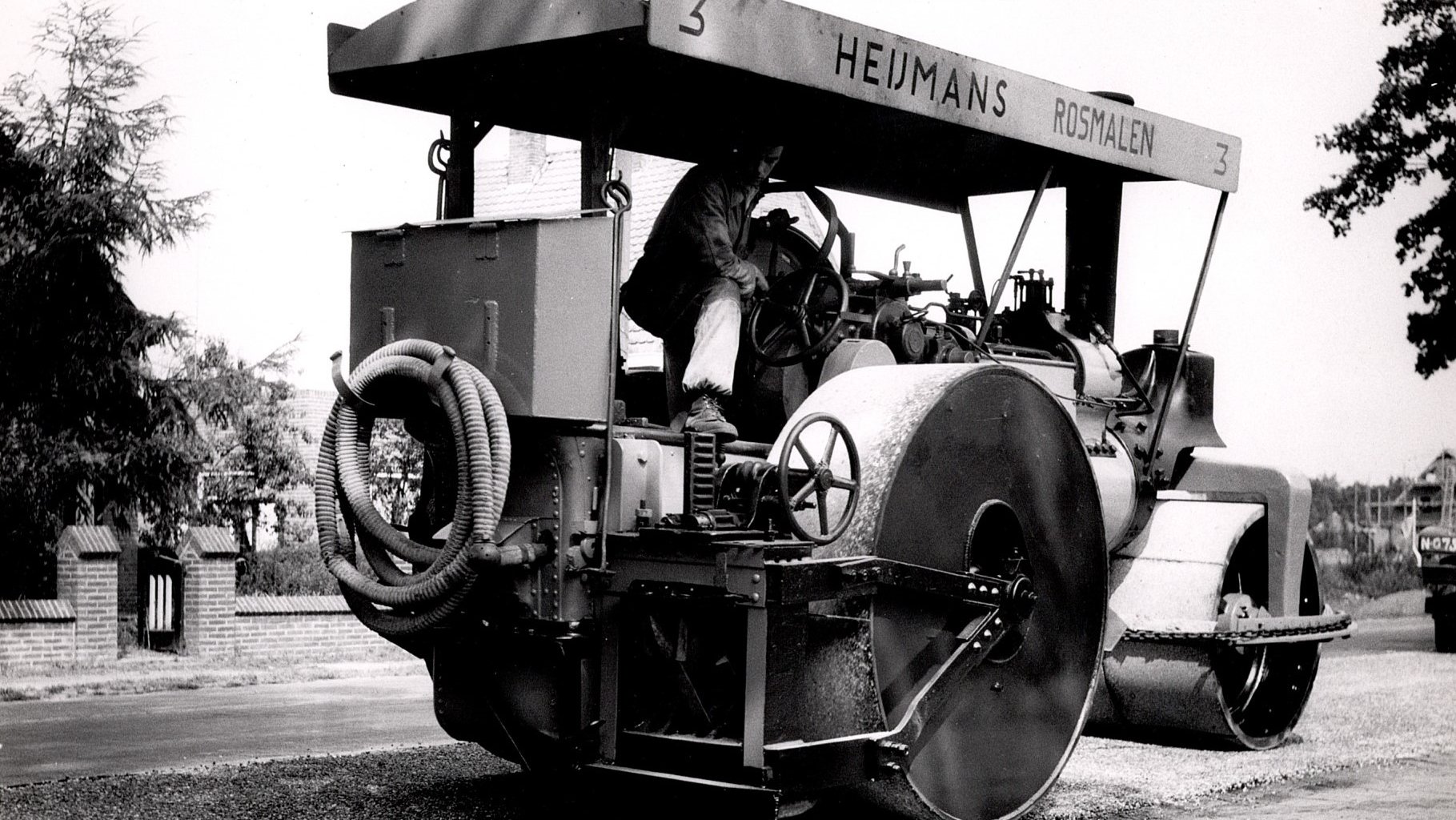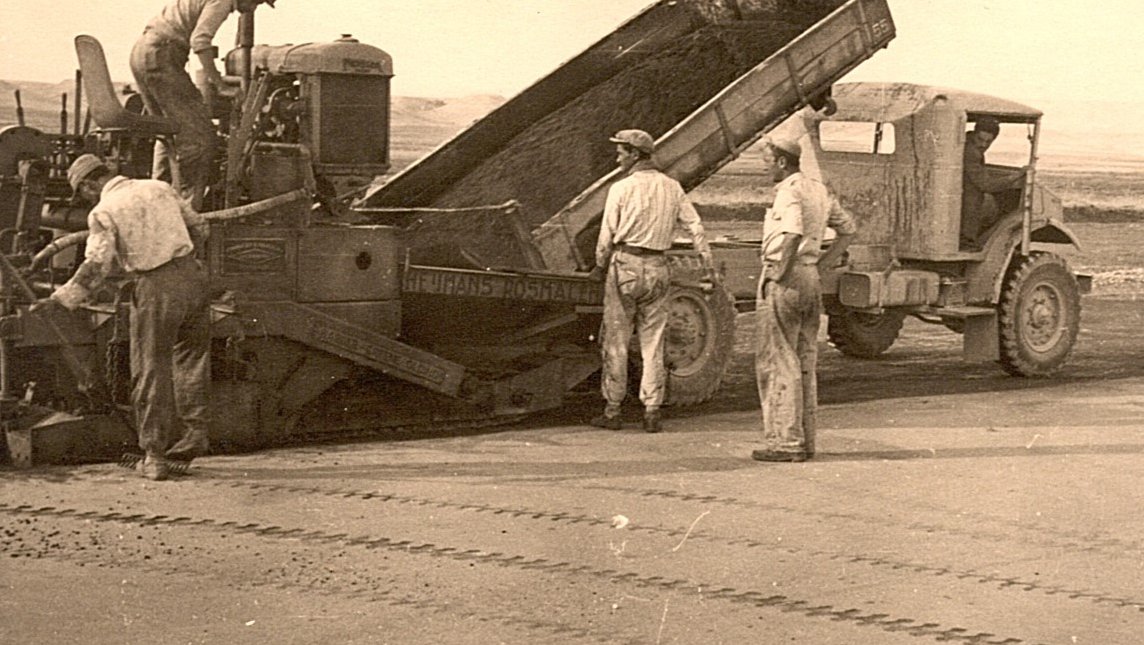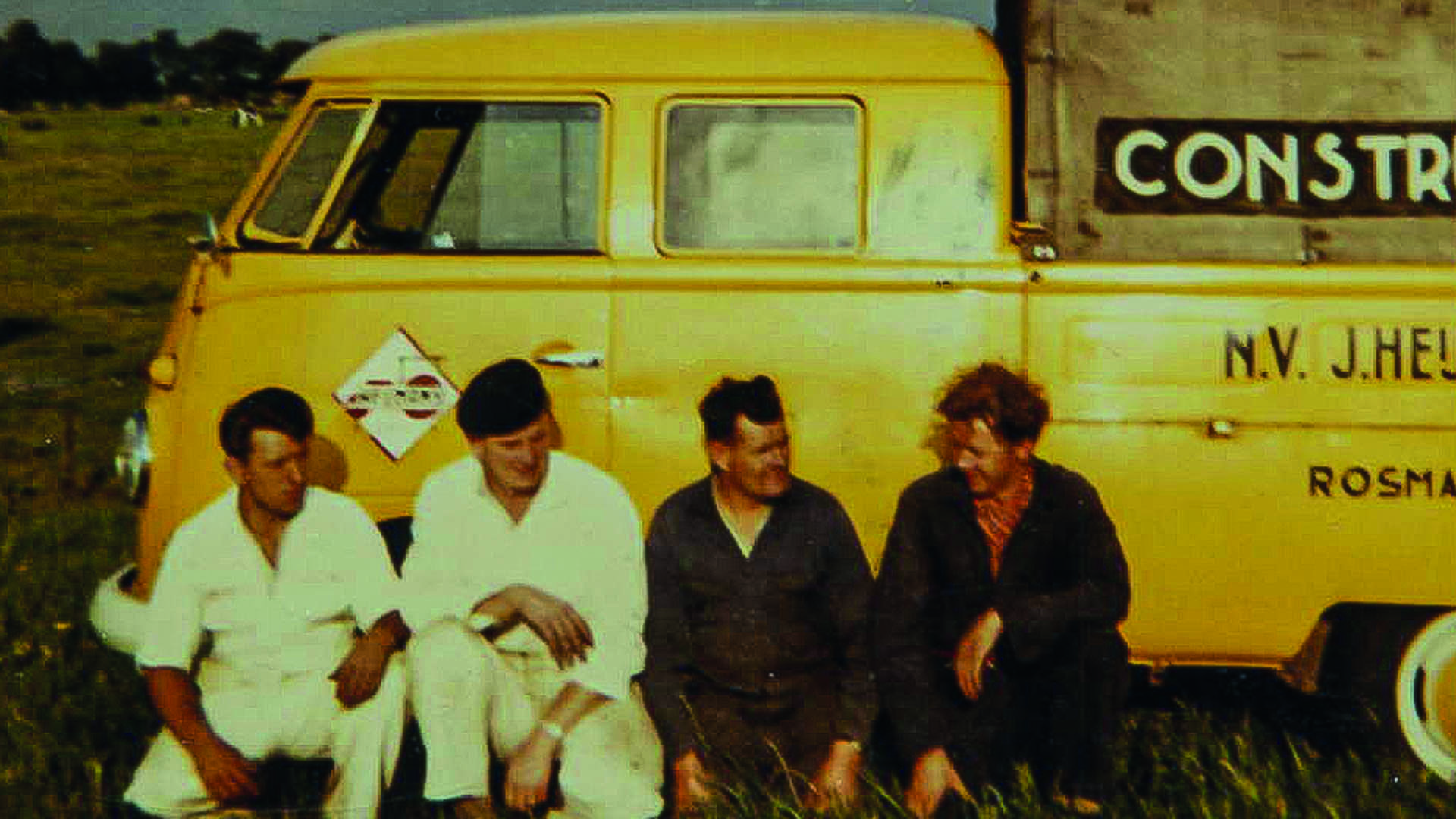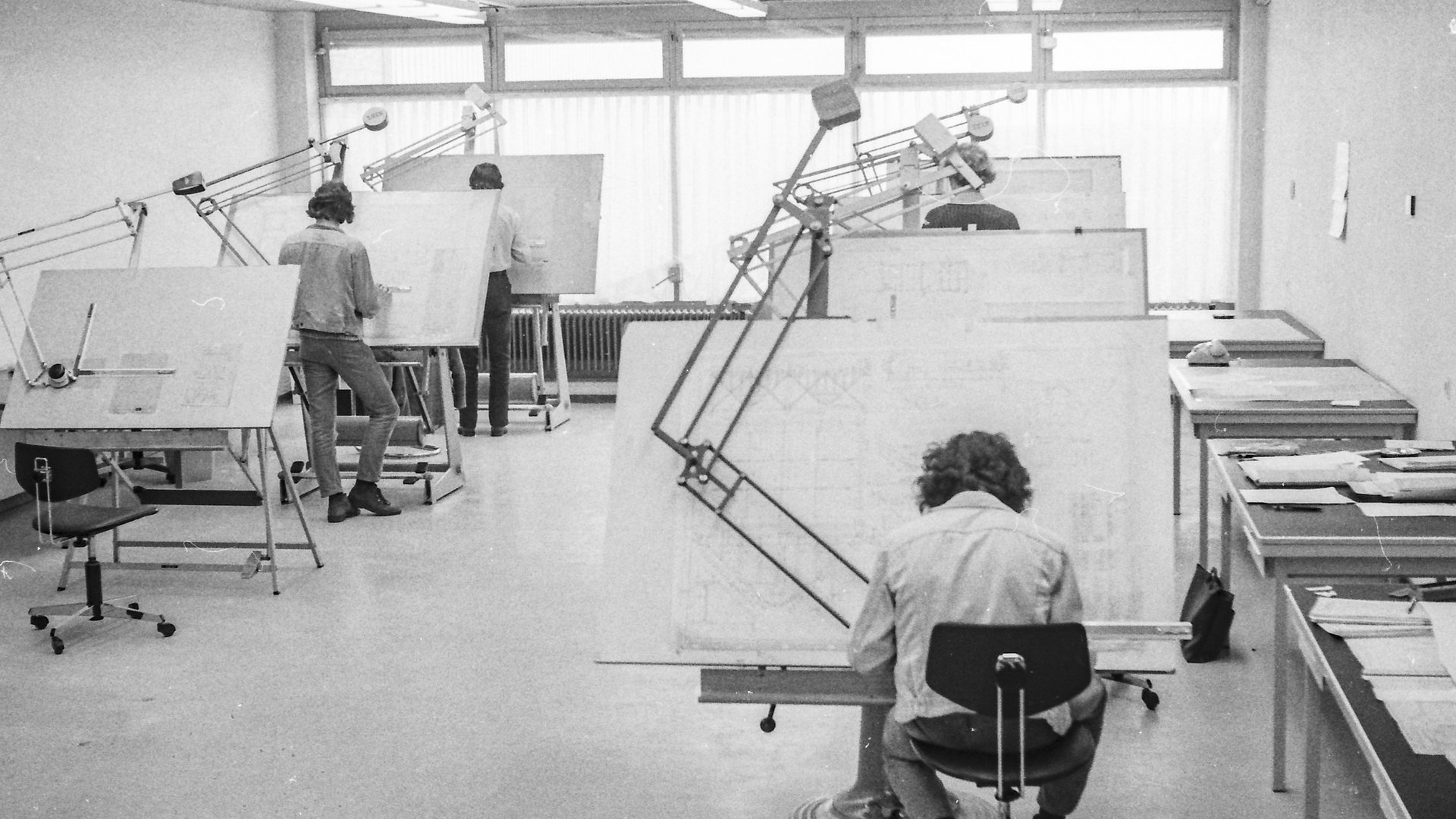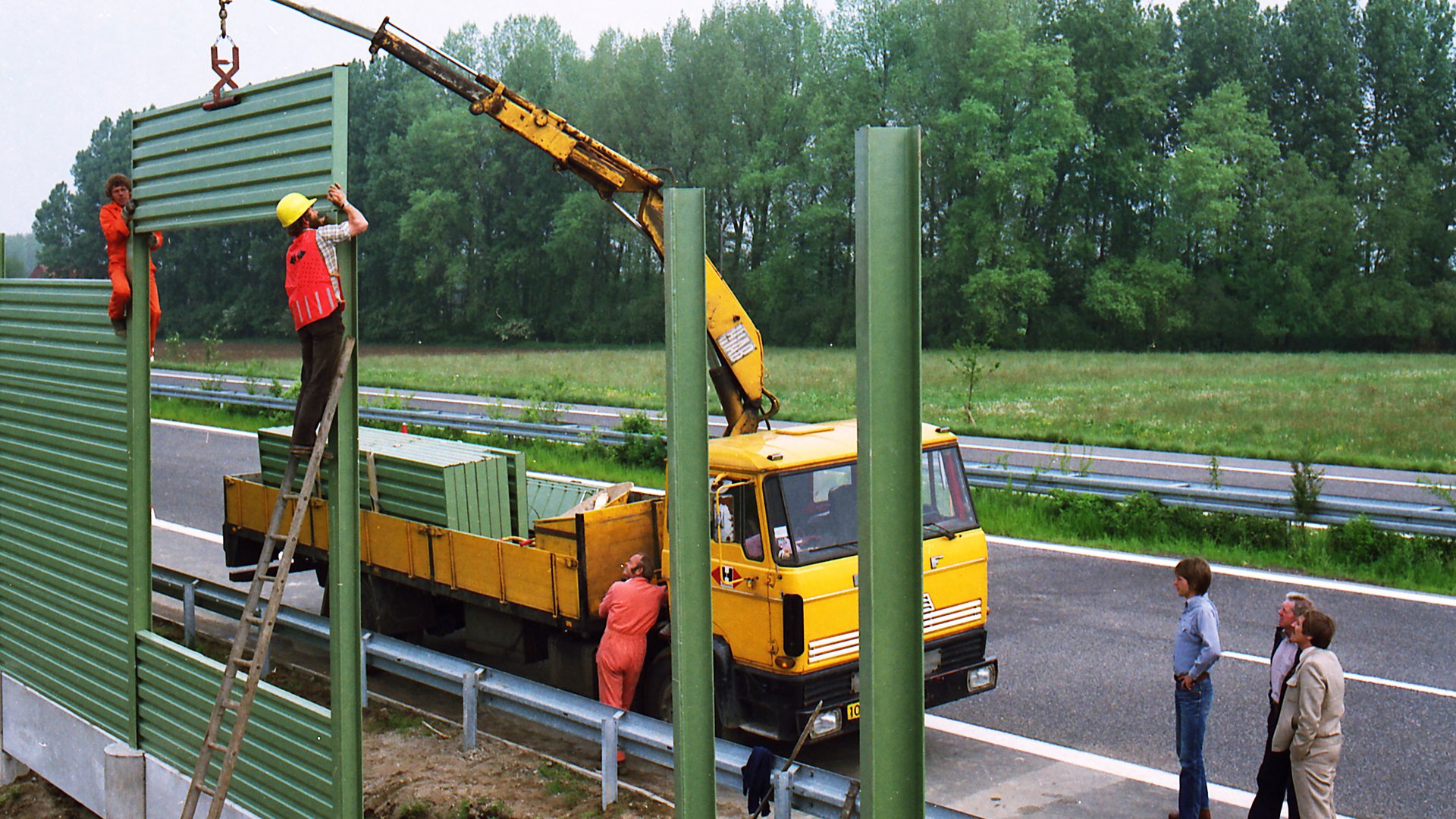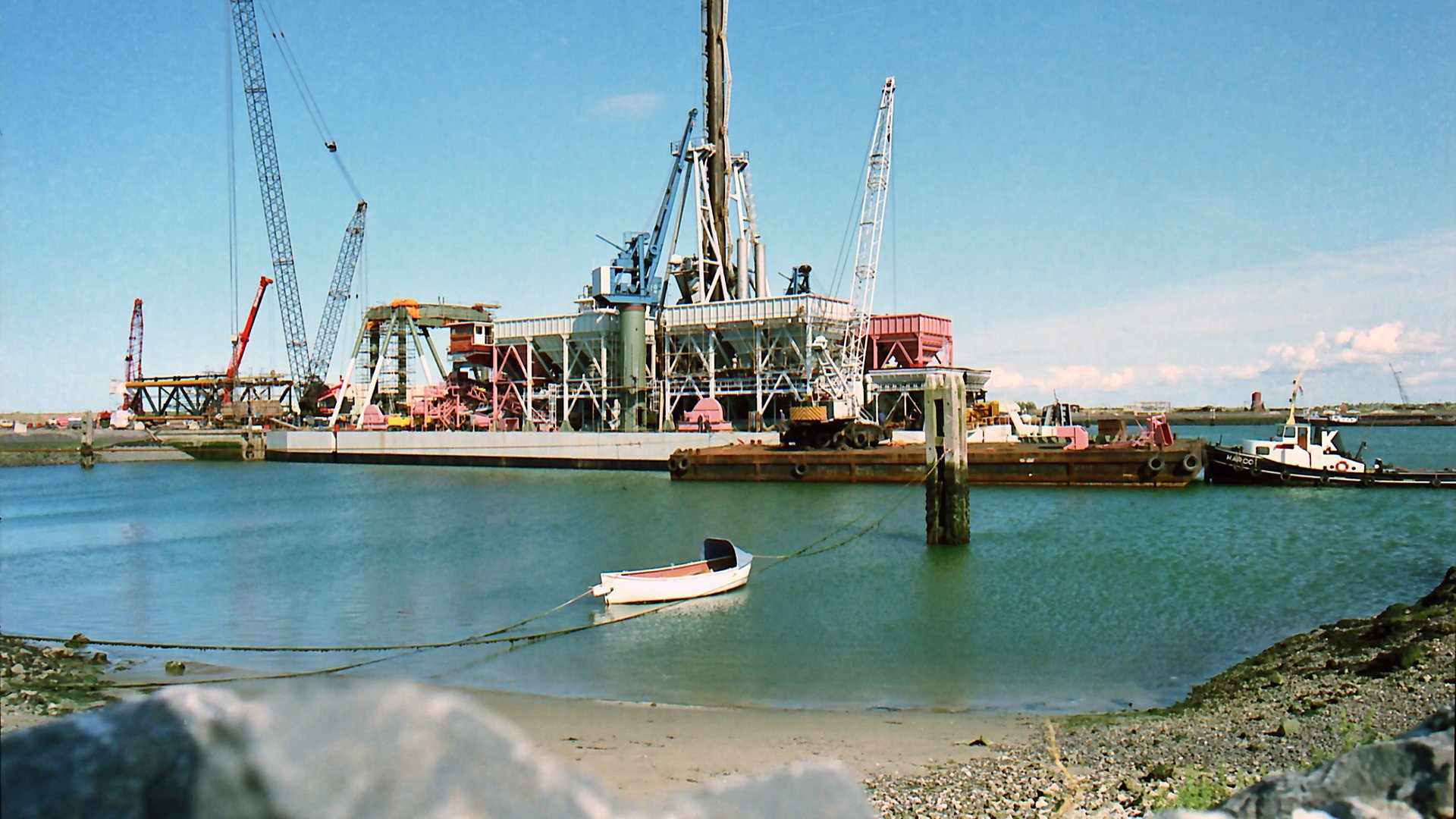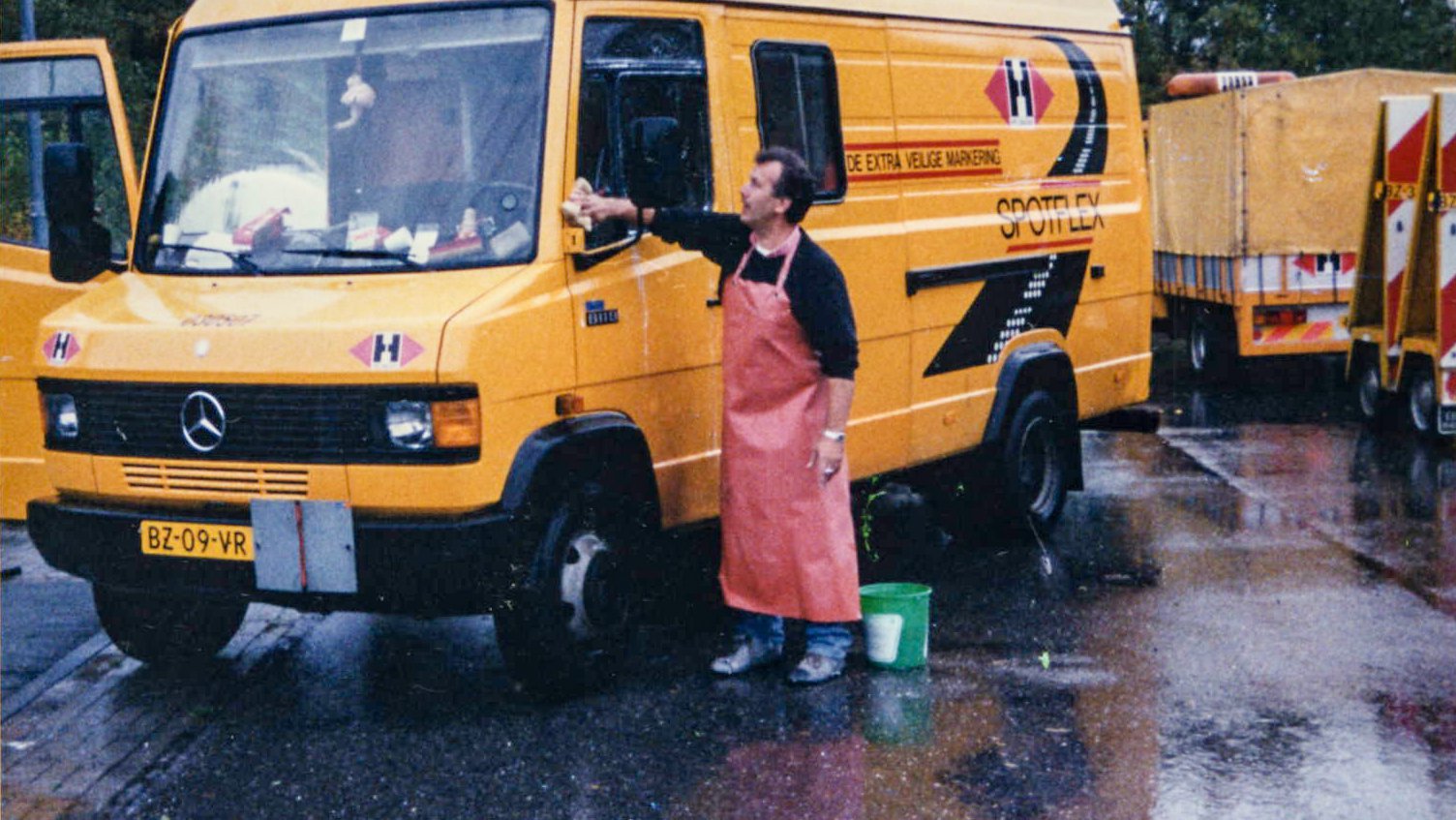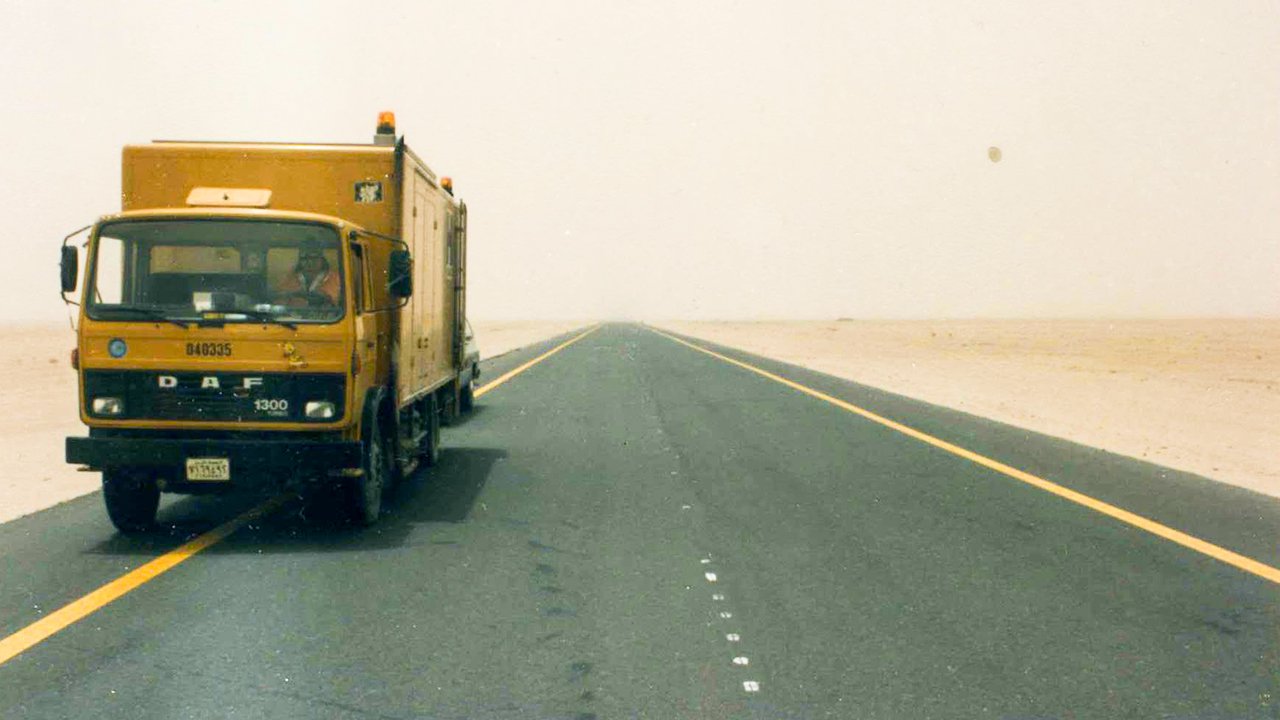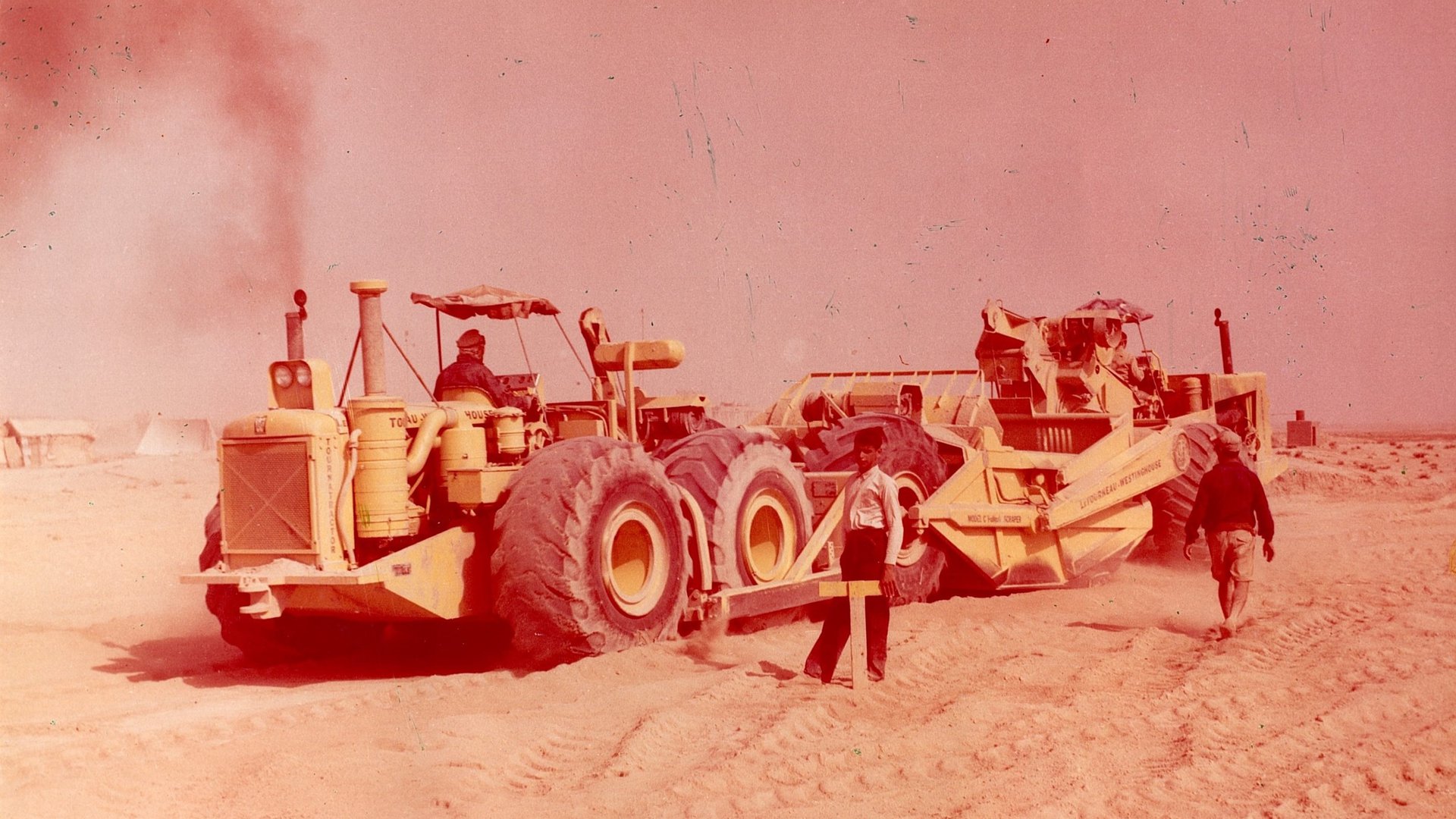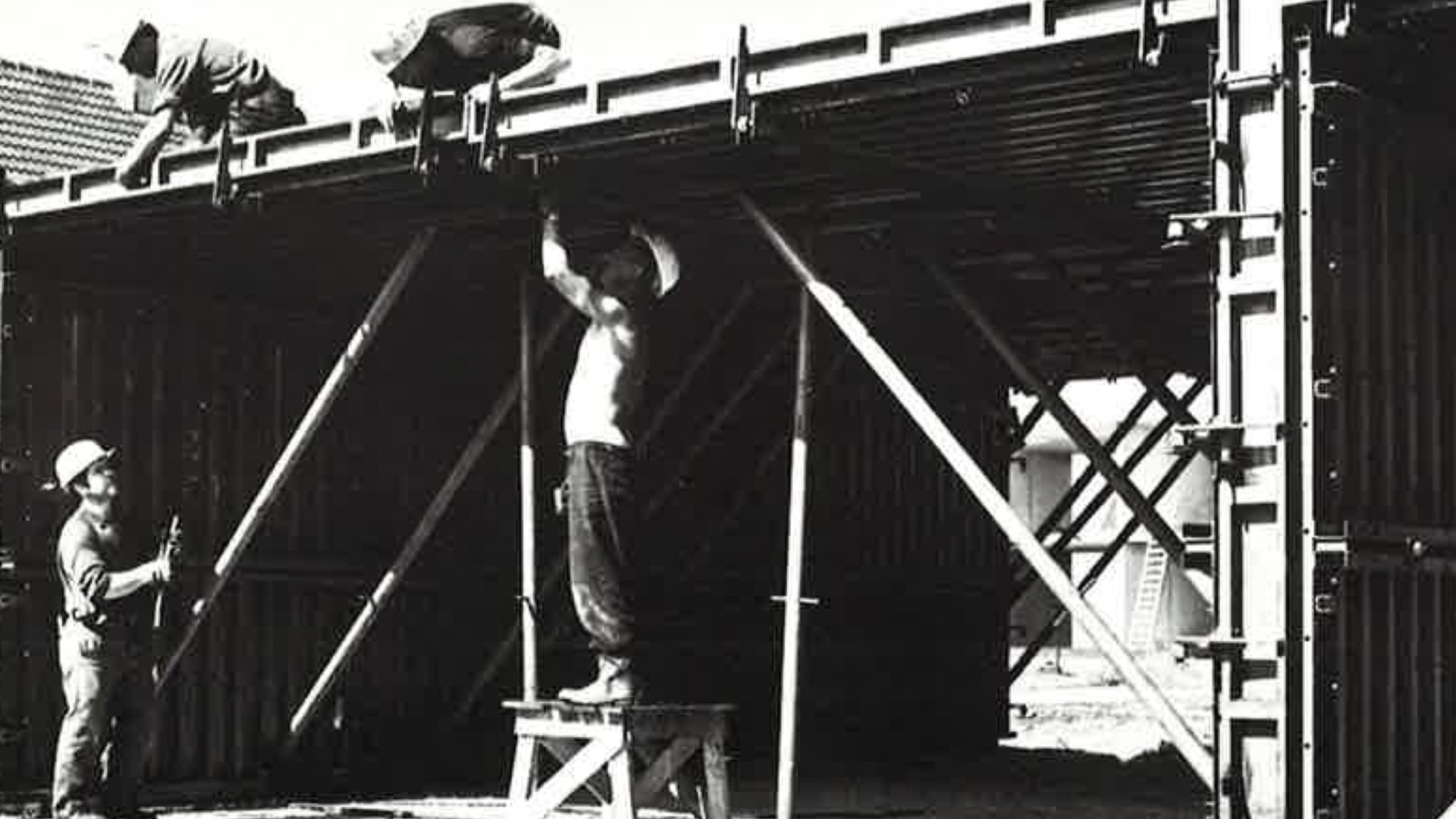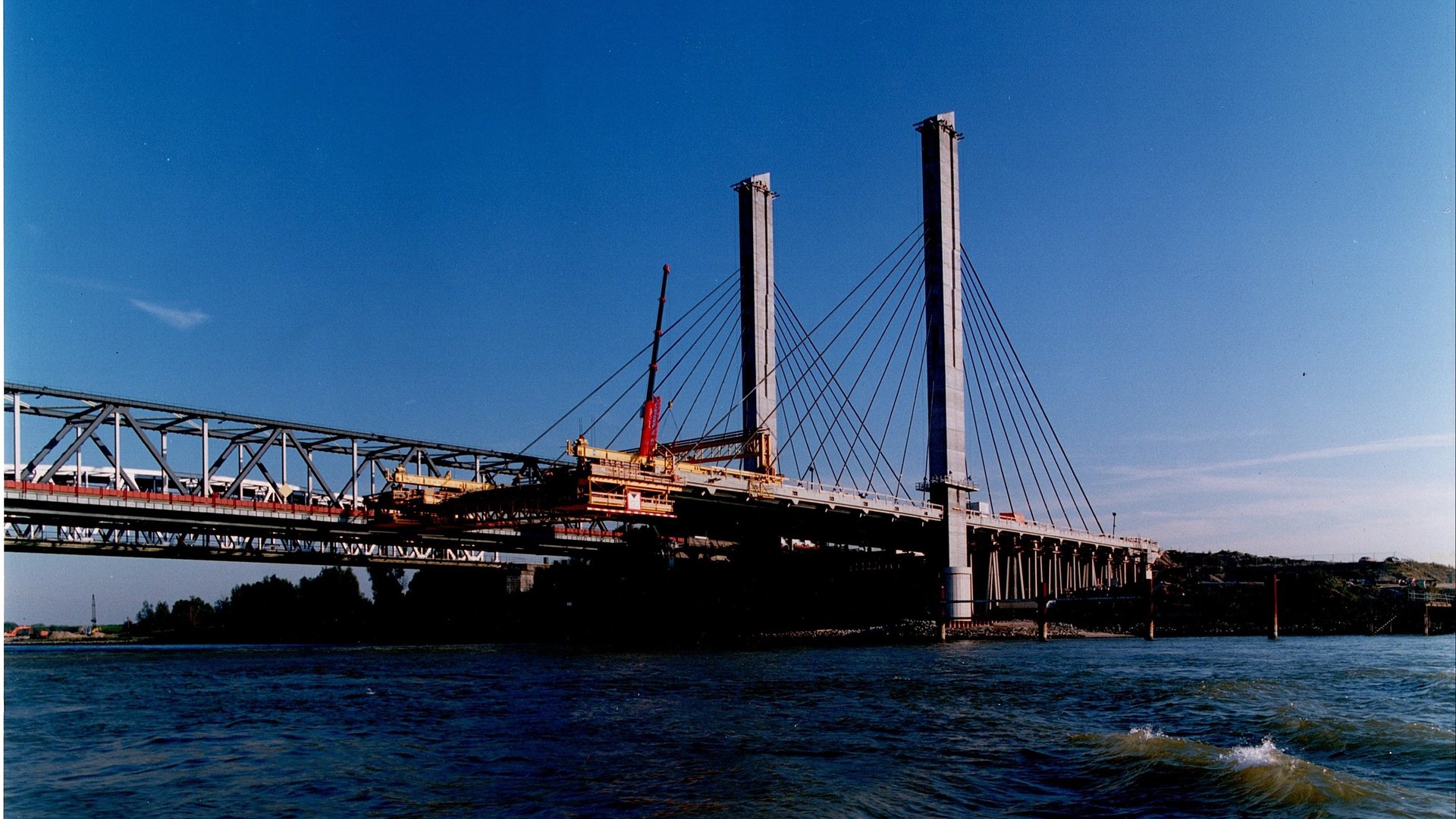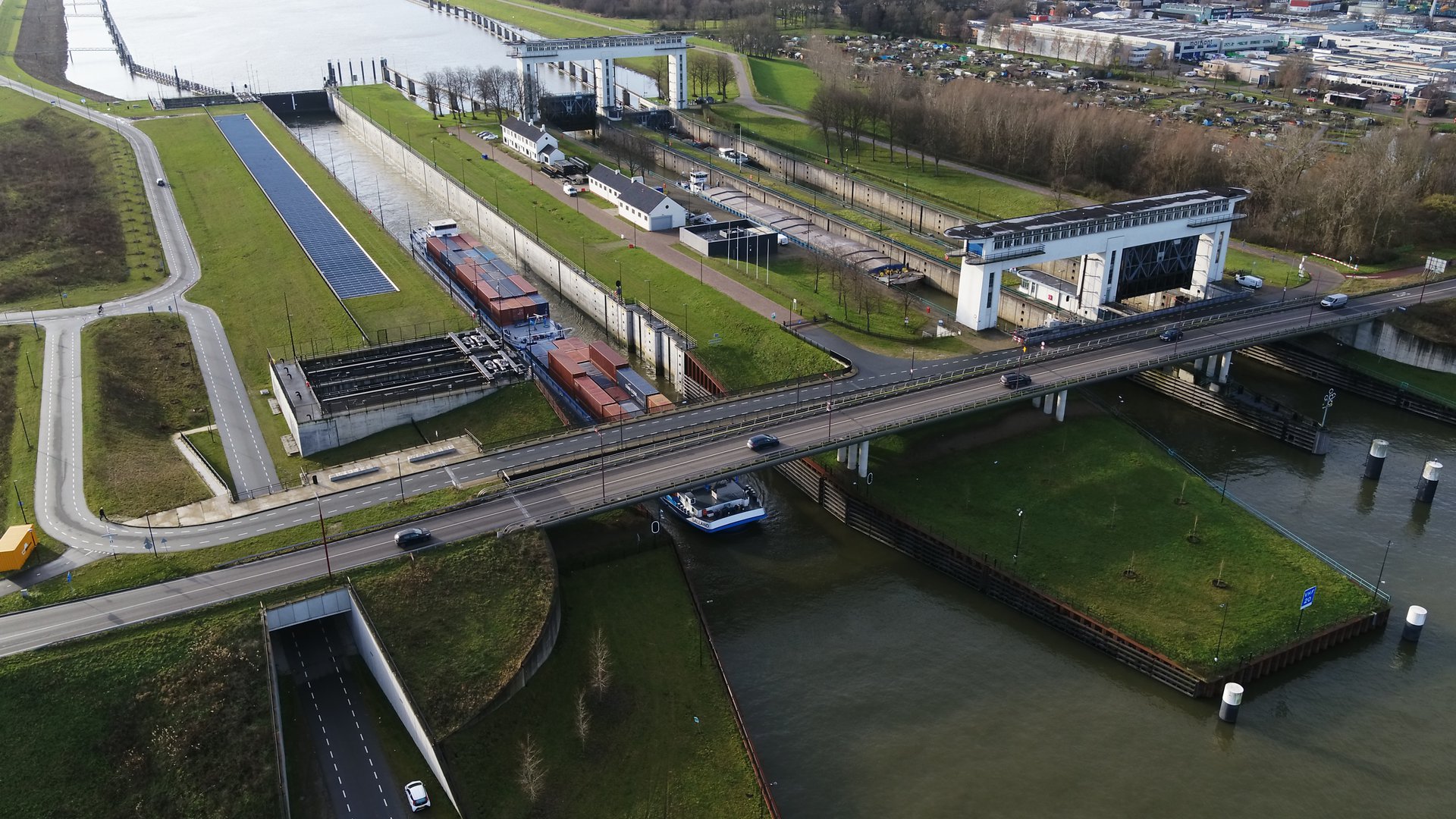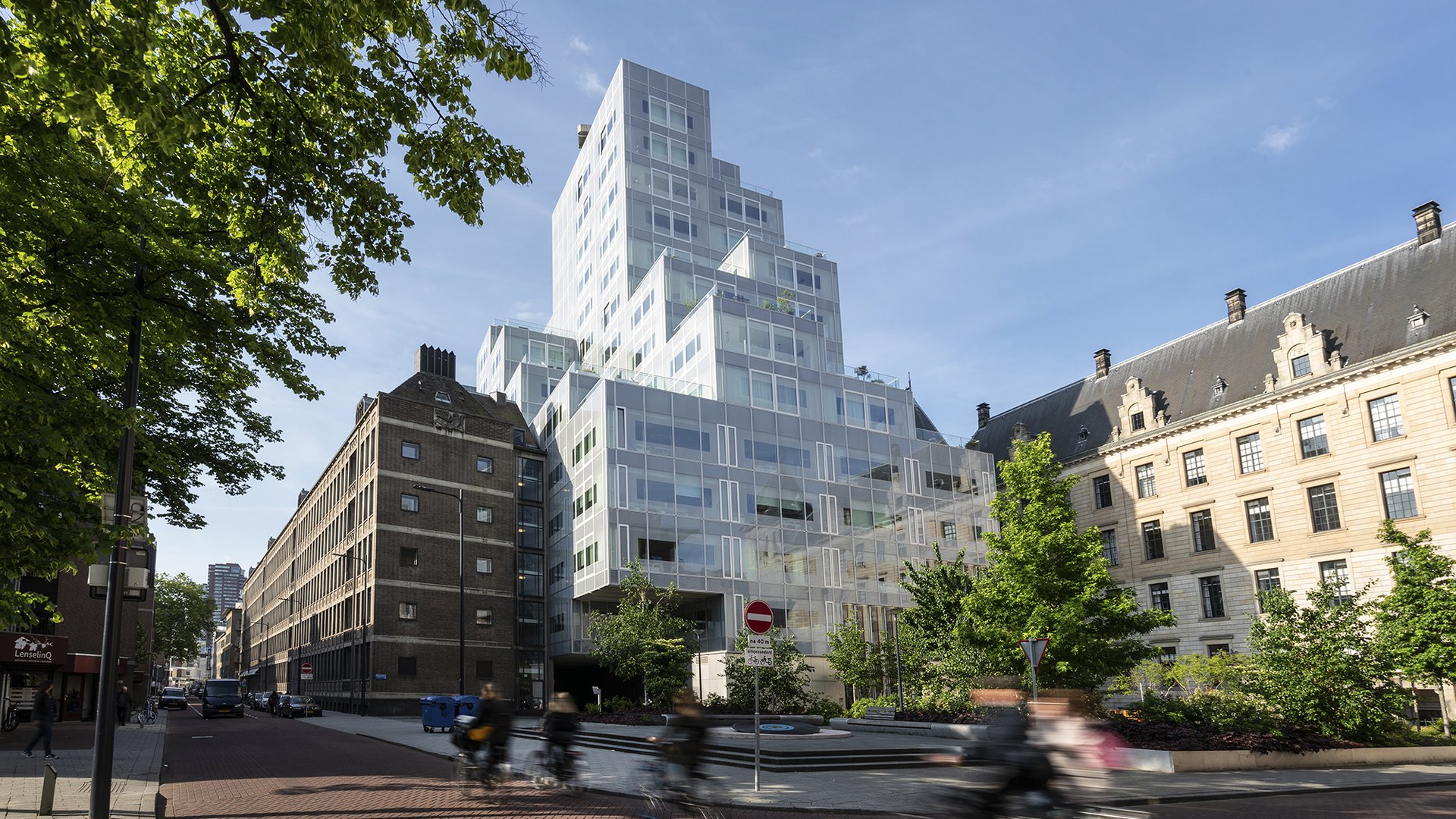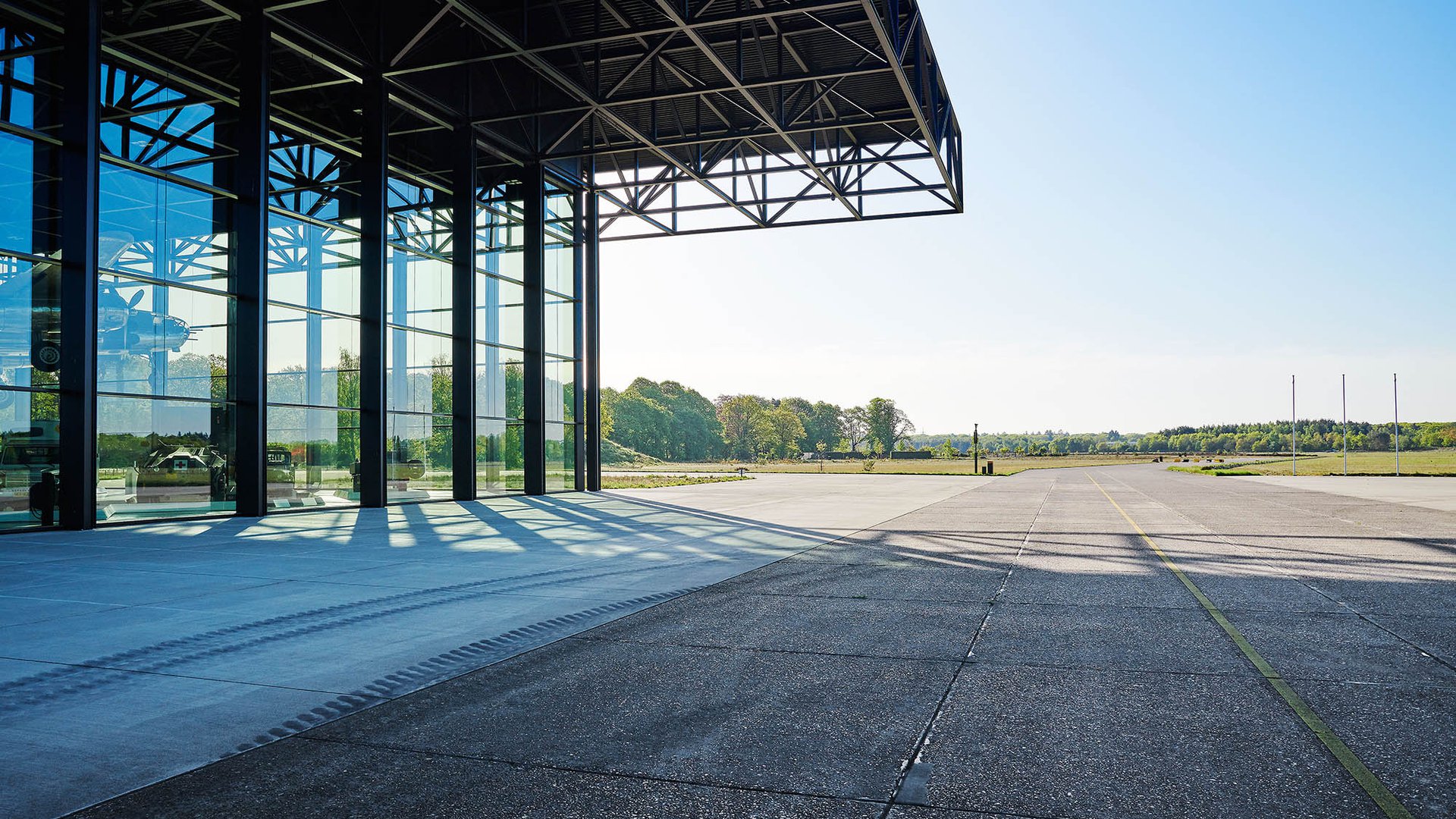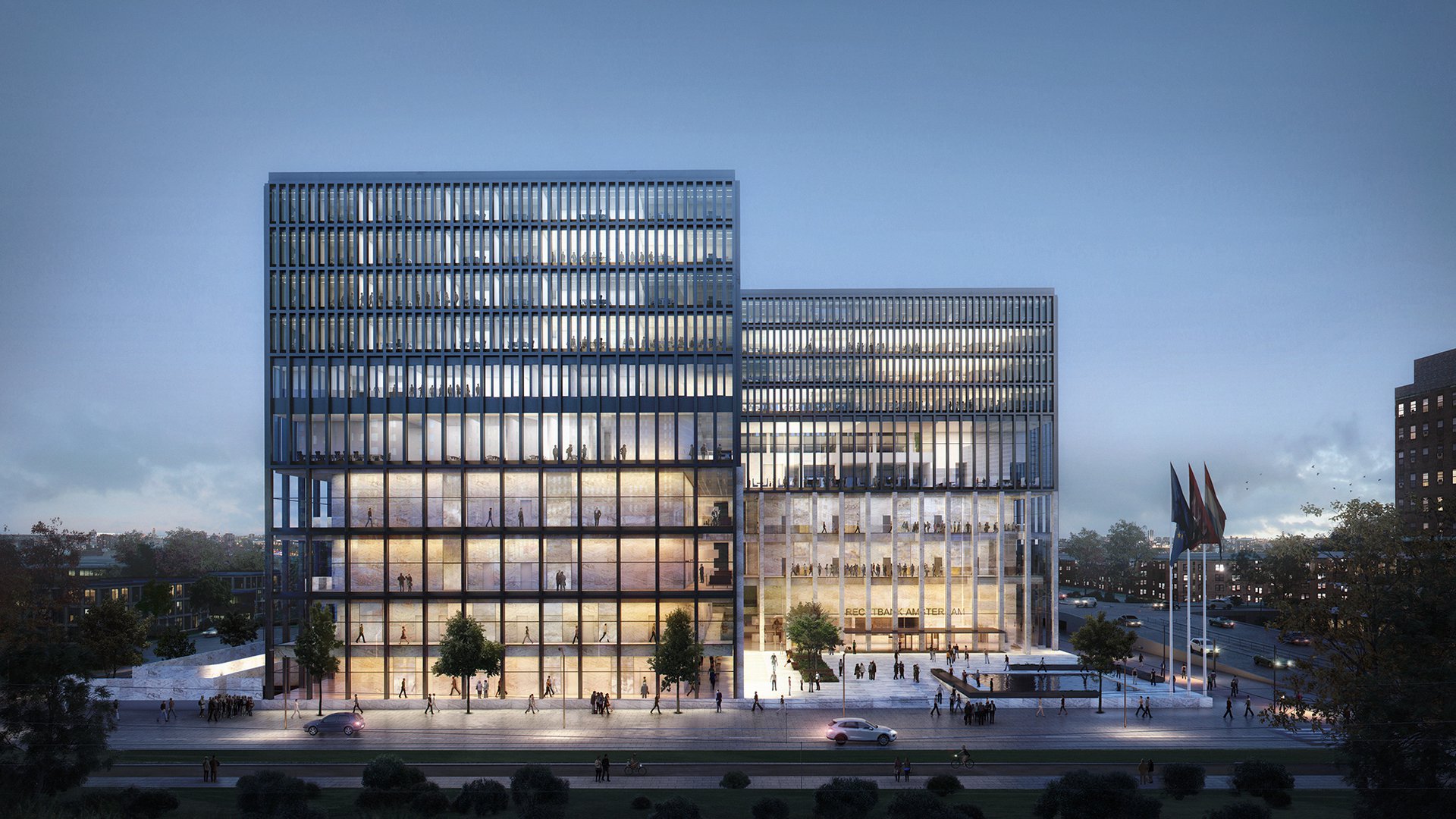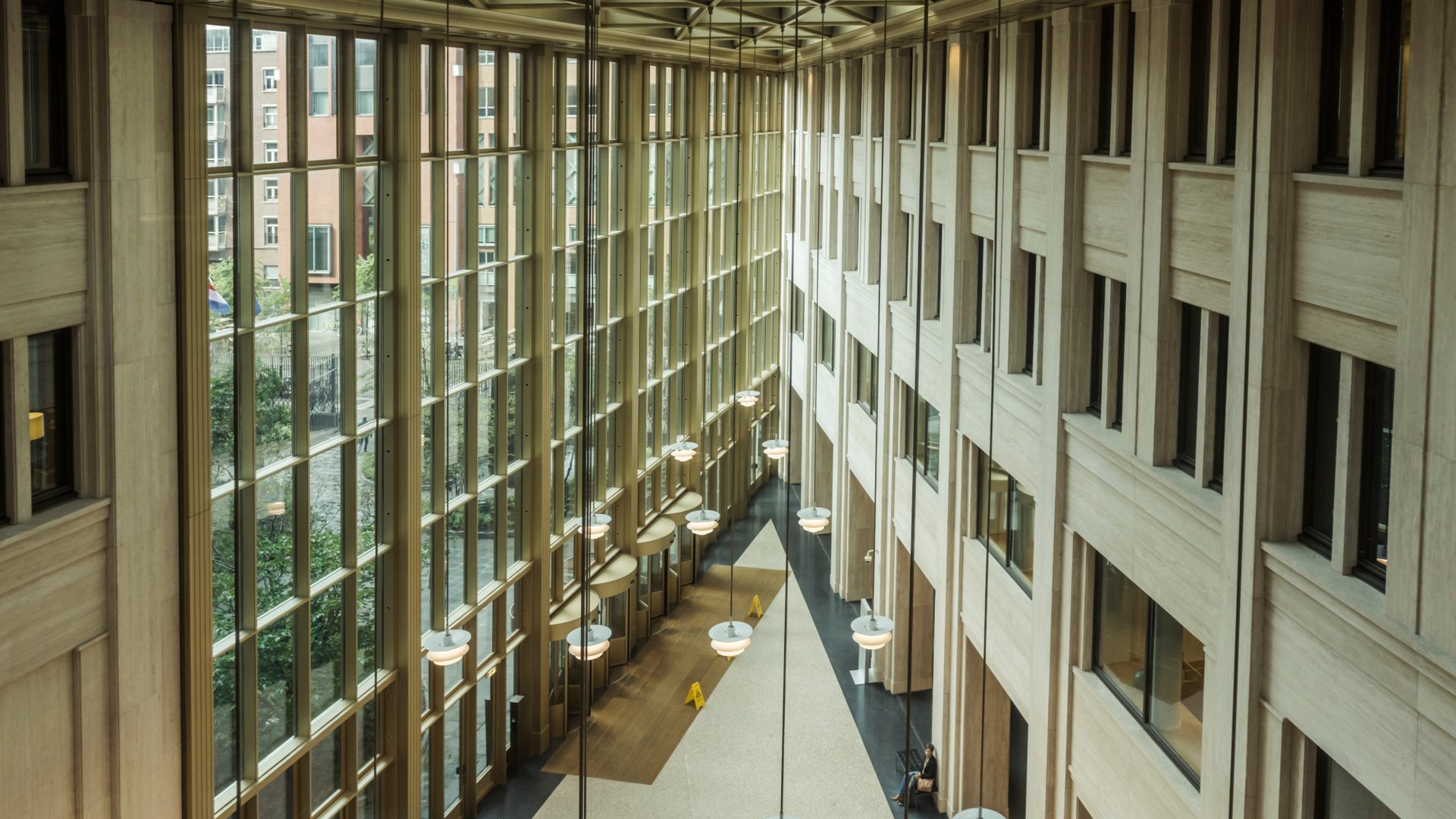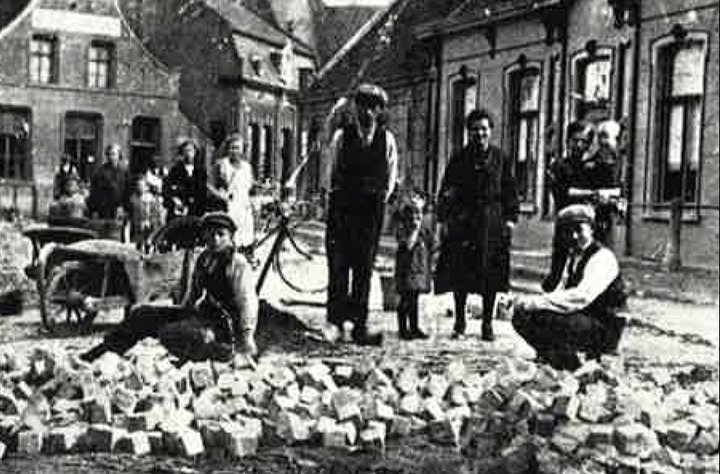
A life's work can start on a square metre of train platform, Jan Heijmans found. In 1923, his very first assignment was the paving work at the Den Bosch railway station. In retrospect, this was a telling location. Not only because Heijmans would later work frequently for rail network operator ProRail and its predecessors, but also because a railway station symbolises travel, discovery and connection. A hundred years of hands-on work has taken Heijmans a long way. Outside Brabant, outside the Netherlands, outside Europe. The biggest journey the construction company made was substantive - and it is still a long way from reaching its final destination.
On 3 April 1923, 20-year-old paver Jan Heijmans started his one-man business in Rosmalen. Heijmans has grown a lot since and in 1993 was listed on the stock exchange. Yet to this day Heijmans remains very much a family business. Key words: dedication, loyalty, an informal business culture, social engagement and an eye for the local community. Because although Heijmans has grown strongly and is now listed on the stock exchange, its culture and mores are still those of a family business in the Netherlands.
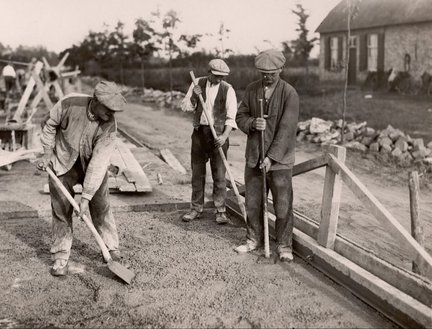
That family feeling is also reflected in the words devoted to founder Jan Heijmans by then chairman of the Supervisory Board F. van Rijckevorsel at the company’s 25th anniversary: “His door is open for every worker, but also for the parents of his workers (...). He is everyone's go-to person. The number of his staff is growing, but changes very little. (...) Once he has decided to put his trust in you, he trusts you.”
Faithful
Fifteen years later, on the company’s fortieth anniversary, Jan Heijmans was praised for his good faith: “Faithful to his convictions and ideals, faithful to the church, to the Queen and his fatherland.” These words also do justice to the choices the company made during the war years: armed with an aversion to National Socialist ideals, Heijmans refused to lend a helping hand to the German occupiers. This why between 1940 and 1945, the company saw a sharp drop in the supply of work: in 1939 turnover was ƒ 700,000, while by 1944 this had shrunk to a mere ƒ 160,000. At the same time, Heijmans was always on the look-out for ways to protect its workers from work in German labour camps. It managed to do this partly through illegally issued false identification papers (Ausweise). Heijmans also managed to keep hold of its entire fleet of machinery, with the exception of a sand dredger that the retreating Germans sank. From September 1944, Heijmans employees repaired the roads in the liberated Eindhoven-Nijmegen corridor, to make it easier for the Allies to transport their troops.

Wind in the sails
After the war, Heijmans enjoyed strong tailwinds. This was primarily due to orders from government bodies, such as the Ministry for Public Works and Waterways, as well as provincial and local authorities. This involved a great deal of repair and construction of roads, sewerage and drainage systems, but also airfields for the Ministry of Defence: from Volkel (1945-1946) and Gilze-Rijen (1947) to Welschap (1950) near Eindhoven.
It was also all hands on deck on the hydraulic engineering front. In the period between 1950 and 1970, the asphalt ships Dorus and Jan Heijmans were intensively involved in the Zuiderzee Works and the Delta Works, among other projects. Self-developed methods and machines won the company additional orders in coastal and shore works. The company was also granted a number of national and international patents, in particular for types of underwater concrete and bitumen.
Heijmans itself was also exploring the world at this point. In the 1950s, the company built two NATO airfields in Turkey, including buildings and installations. In the early 1960s, Heijmans was able to start work in Persia (now Iran). The assignment: the execution of an extensive irrigation and road project. At the end of the 1960s, the Belgian Asphalt and Concrete Company (Belgische Asfalt- en Betonmaatschappij) opened its gates in Antwerp. This Heijmans subsidiary, the first outside the Netherlands, built numerous motorways in Belgium.
The Heijmans village
During all those years, Heijmans advertised itself as a road and hydraulic engineering company, with a small residential building department. But would it be able to realise an entirely new neighbourhood? The Rosmalen local council thought so and sought cooperation with Heijmans in the early 1960s. This led to the construction of Hintham-Zuid, between Den Bosch and Rosmalen: 1,500 homes, shops, business premises, schools and a church. In the local vernacular: the Heijmans village. It was a success, concluded both client and builder. On the one hand, Heijmans had proven that it could build a complete neighbourhood. On the other, it was a showcase for what would become the company’s trademark: a long-term commitment to places.
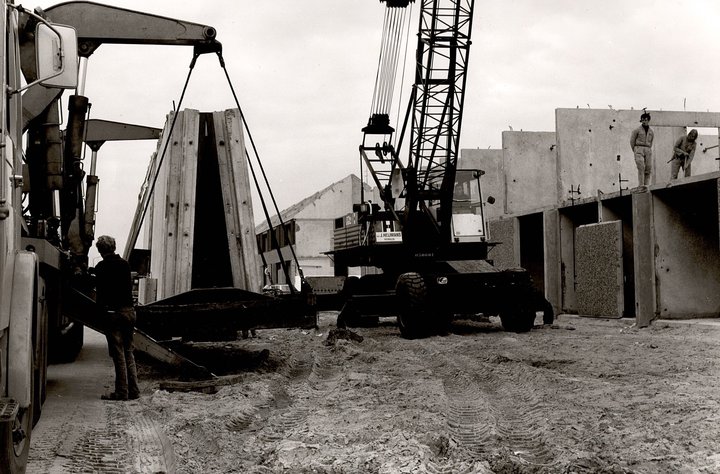
In the 1970s, Heijmans laid the foundation for its strong reputation in non-residential building. Eventually, the company realised numerous educational institutions, knowledge and research institutes and hospitals, plus cultural facilities, water treatment plants and government buildings. In addition, Heijmans was involved to varying degrees in the design, financing, maintenance and even management and operation of a number of utility projects. Heijmans also won a great deal of admiration in commercial real estate: the company has completed countless shopping centres, office buildings and other commercial properties in the Netherlands.
Acquisitions
At the end of 2000, Heijmans took over its industry peer Koninklijke IBC in Den Bosch/Best, making it one of the top three Dutch builders. It was a promising marriage: Heijmans leaned heavily on residential building in expansion areas, including so-called Vinex locations; IBC was particularly well versed in the art of inner-city (re)development. The common denominator: both companies were national players, but also anchored in their regions - from Walcheren to Leeuwarden, from Kerkrade to Assendelft - and active in Belgium. With the arrival of IBC, the number of employees increased to 10,850 from 8,300. This was followed by another strategic acquisition in 2002: property developer Proper-Stok Groep. Another sizeable acquisition in 2006 was Burgers Ergon in Eindhoven, which, with 1,400 employees at the time, was one of the top five largest installation companies in the Netherlands. Finally, these were followed by several acquisitions in the UK and Germany.
However, the 2008 credit crisis turned out to be a major game-changer. It forced Heijmans to let go of several subsidiaries for strategic reasons. When Heijmans saw more strong headwinds in 2016, it also bid farewell to its Belgian, German and UK operations. Since 2017, the company has no longer had any foreign subsidiaries. From that time onwards, Heijmans has been a national player in property development, infrastructure and building and technology.
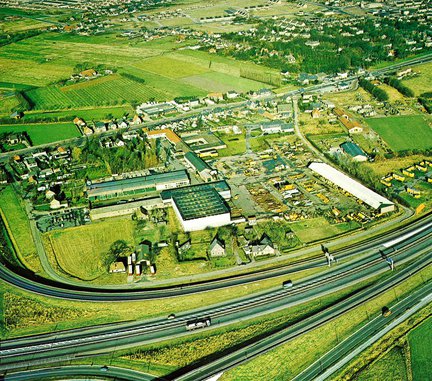
Loyalty
Heijmans often makes long-term and intensive commitments to an area or project - that too is a form of loyalty. This basic attitude includes thinking along with clients and looking beyond your own boundaries. The following are just some of the standout projects:
- For a long time, Katendrecht in Rotterdam was a ragged, rundown peninsula. But the turnaround began about 15 years ago. Heijmans has been involved in plans for the revival of Katendrecht right from the start. The company’s long-term thinking, design, development and construction strength is evident from the Park and Laan Quarter, the Cobana residential tower blocks with 375 apartments and the Fenix 1 warehouse redevelopment. The latter complex, comprising 212 loft apartments, was awarded the Rotterdam Architecture Prize and BNA Building of the Year, among other prizes. On the southern quay, Heijmans will deliver the Havenkwartier in 2023, with 200 houses and apartments. All these projects devote a lot of attention to liveability, the energy transition and sustainability, social cohesion and mobility. And these efforts are paying off: Katendrecht has changed from a disadvantaged to an advantaged neighbourhood and is now listed as one of the most popular places in Rotterdam.
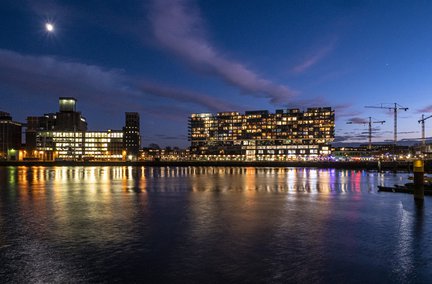
2. Heijmans is a creator of healthy living environments. This also applies to the Vijfsluizen district in Vlaardingen and the Maanwijk district in Leusden, where Heijmans is building 400 and 200 homes respectively. Heijmans sees both projects as flagships. Their nature-inclusive design ensures that housing and nature reinforce each other. Maanwijk goes one step further and is the first park-inclusive neighbourhood in the Netherlands. New technologies that help create healthy, sustainable, comfortable and safe living environments play a major role in these projects. Several communal gardens and ‘living rooms’ provide opportunities to meet fellow residents and others, heling to create close-knit communities. To help create cleaner mobility, these projects also provide shared transport.
Commitment also means that Heijmans will not bid farewell after completion, but will stay connected to the neighbourhood. Together with the local council and housing corporation, among others, Heijmans organises social and nature-enhancing activities. To evaluate the impact/effectiveness, they collect residents’ insights and experiences and Heijmans - together with the RIVM (Dutch National Institute for Public Health and the Environment) and the Naturalis Biodiversity Centre - carries out impact measurements.
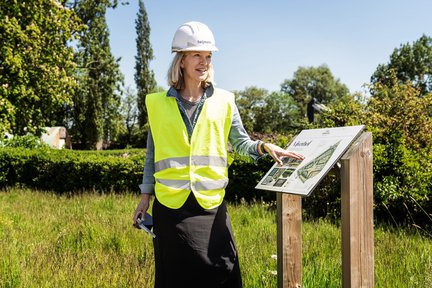
3. Since 1997, Rosmalen, where Heijmans' head office is located, has been part of the municipality of Den Bosch. But ever since its inception in 1923, Heijmans has been at home in the Brabant capital, where Jan Heijmans realised his very first assignment as a paver at the Den Bosch railway station. That regional commitment has many manifestations: projects in residential building, non-residential building, property development and infrastructure. One eye-catching project is the restoration of the 3.5-kilometre-long historical city river the Binnendieze, one-third of which has now been ‘canalised’, or converted into a navigable canal. On an international level, Haverleij continues to attract a lot of attention: this is a 180-hectare new-build housing estate in which eight high-profile castles and a golf course are interwoven with the landscape. The urban design is by Sjoerd Soeters.
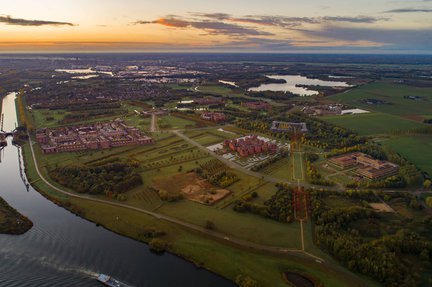
No less talked-about is the Sint-Jan parking garage (1,040 spaces), right next to the south-east city walls. A listed location, which Heijmans has done justice to with an underground garage that topped by a pond with a long pedestrian bridge. One of Heijmans’ major inner-city redevelopments is the Gasthuiskwartier. On the site where guest houses and hospitals stood for 745 years, Heijmans is realising houses and apartments, including government-regulated social rental homes. This will include the repurposing of no less than nine listed buildings, including the Star Building, the pharmacy and the old polyclinics.
4. Finally, Heijmans is the developer of the so-called Heijmans ONE, based on an idea by a trainee. This temporary home offers 39 m2 of living space, including a mezzanine, and they can be dismantled and installed in just 24 hours. The Heijmans ONE is also attractive architecturally: an eye-catching design of steel and sustainable timber. There are now about two hundred of them in the Netherlands, often in so-called break landscapes, or areas temporarily without definitive zoning plans. The Heijmans ONE offers homes to the likes of students, residence permit holders and other house hunters who are urgently looking for a home. An extra advantage offered by the Heijmans ONE is its easy mobility.
Safety
The construction industry is not without risks. Safety is a top priority day and night at Heijmans. ‘We work safely or we don’t work’ is the basic principle at every single layer of the organisation. Not for nothing is Heijmans’ No Accidents! (GO!) safety policy seen as one of the best in the industry. This policy includes a range of measures and resources: awareness campaigns, courses, preventive measures, protective equipment and reporting structures. Heijmans was the first company in the sector to start sharing all relevant information around industrial accidents. Finally, the extensive measures that Heijmans took during the pandemic underline its focus on health and safety. That too is caring for people.
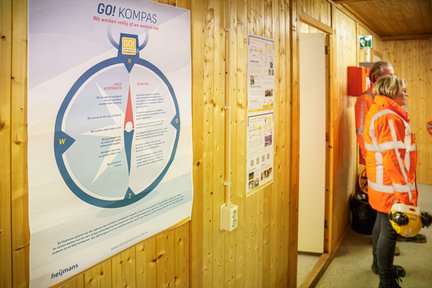
Social challenges
Making the Netherlands more liveable, healthy and sustainable is Heijmans’ raison d'être - not for nothing is its corporate strategy ‘Creators of the healthy living environment’. What started with a square metre of railway platform has grown into 41,543 square kilometres of the Netherlands. In that working area, Heijmans is literally on the job day and night. You see Heijmans’ hand everywhere, in cities, villages and landscapes. From the Westerschelde Tunnel, Martinus Nijhoff Bridge and Beatrix Locks to Eurojust in The Hague, Het Timmerhuis in Rotterdam and the National Military Museum in Soesterberg. And it is well worth mentioning that the latter project is a so-called DBFMO construction, in which Heijmans, in addition to Design, Build, Finance and Maintenance, is also taking on (part of) the operation for 25 years.
Of course Heijmans is helping to reduce the housing shortage in the Netherlands by designing and building new districts in expansion areas, renovations and new-build projects in old city districts and integrated inner-city redevelopments. Heijmans is also industrialising the construction process: building conceptually enables Heijmans to speed up residential building, while making sure standardisation and choice of variation are not mutually exclusive. Heijmans is also helping to provide accommodation for the legislative, executive and judiciary powers - from the Senate and the Council of State to ministries, along with buildings for the judiciary.
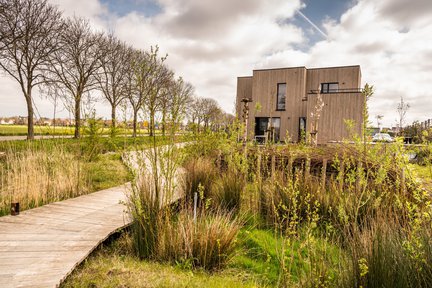
Heijmans’ aim is to provide smart and healthy space for living, working and connecting. It succeeds in this thanks to its three business areas of property development, infra and building and technology. The interrelated knowledge and expertise of these business areas is now many times broader than in the past. After all, in the 21st century, Heijmans is more than a company of technical builders. Traffic engineers, ecologists, data analysts, behavioural psychologists and experts in sustainable energy and circularity also work under the yellow flag. Thanks to these many disciplines, Heijmans is now able to help solve major social issues. This applies to housing challenges, the energy transition and climate change, but also to mobility, social cohesion and biodiversity.
All these issues touch upon corporate social responsibility, which takes various forms at Heijmans. To give a few examples: from 2023, Heijmans will be CO2 neutral, with any residual carbon emissions offset. Heijmans is also training refugees with residence permits to work in various parts of the company, so they can build a new future in the Netherlands. Heijmans also has a sustainable procurement policy for materials and goods; uses circular concrete; builds fauna passages; and cooperates with Wageningen University, TU Delft, The Pollinators, Stichting Struikroven and other organisations as part of its sustainability drive. Heijmans also takes its responsibility in the far-reaching recycling of waste flows. Nor does it limit itself to its own ‘house and backyard’, but uses its influence to encourage other players in the chain to increase their sustainability-related efforts.
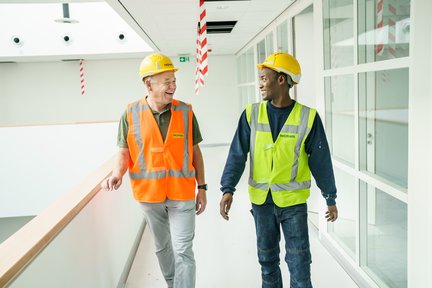
Future
One hundred years of Heijmans marks the beginning of a new chapter. The company’s long-term strategy is based on three pillars: better, smarter and more sustainable. This is achieved by deploying knowledge, strength and skills in the most integrated way possible, by looking for the right cooperation partners and by increasing sustainability in the areas of energy, materials and space. This is how Heijmans creates healthy living environments throughout the Netherlands.
